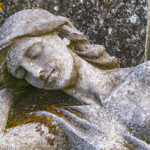War Memorials: Honoring the Sacrifice and Remembering the Past
War memorials hold a special place in our hearts as they not only pay homage to the brave souls who laid down their lives for their country but also serve as a reminder of the atrocities of war. These poignant structures are scattered across the globe, standing as symbols of remembrance and gratitude. In this article, we will delve into the significance of war memorials, explore their various forms, and discuss the emotions they evoke.
The Historical Context and Purpose of War Memorials
War memorials emerged as a response to the immense loss and devastation caused by conflicts throughout history. They serve as physical reminders of the sacrifices made by soldiers and civilians alike. These memorials aim to ensure that the memory of those who perished in war is preserved for future generations. They represent a collective effort to honor the fallen and pay homage to their bravery.
Varieties of War Memorials
War memorials come in various forms, each with its own unique symbolism and purpose. From grand statues to simple plaques, these structures take shape according to the culture, history, and artistic sensibilities of the region they inhabit. Some memorials focus on commemorating specific battles or wars, while others honor all fallen soldiers. Common forms include statues depicting soldiers in action, cenotaphs, obelisks, and arches.
During a visit to the National War Memorial in Ottawa, Canada, I was struck by the immense scale of the structure. The towering arches and intricate carvings perfectly captured the gravity of the sacrifices made during World War I and subsequent conflicts. Standing in its shadow, I couldn’t help but feel a profound sense of respect for those who had given their lives.
Emotional Impact and Healing
War memorials have a profound emotional impact on visitors. They serve as spaces for reflection, remembrance, and healing. The somber atmosphere and the weight of history envelop visitors, encouraging introspection and gratitude. These memorials provide solace to those who have lost loved ones in war, offering a physical space to grieve and find closure.
During my visit to the Vietnam Veterans Memorial in Washington D.C., I witnessed powerful displays of emotion. People gently ran their fingers over the engraved names, tracing the memories of lost friends and family members. Tears were shed, and stories were shared, as individuals found solace in the presence of others who understood their pain.
Preserving History and Educating Future Generations
War memorials play a crucial role in preserving history and educating future generations about the horrors of war. These structures serve as tangible reminders of the past, ensuring that the lessons learned from conflict are not forgotten. They provide an opportunity for dialogue and reflection, allowing visitors to understand the human cost of war and the importance of peaceful resolutions.
The Importance of Continued Support and Maintenance
War memorials require ongoing support and maintenance to preserve their integrity and ensure they continue to fulfill their purpose. As the years pass, these structures face the ravages of time, weather, and vandalism. Communities and governments must take responsibility for their upkeep, so that the memory of those who sacrificed their lives is never lost.
In summary, war memorials stand as powerful symbols of remembrance, gratitude, and healing. They serve as physical manifestations of our collective appreciation for the sacrifices made in times of conflict. Through their various forms, war memorials encapsulate the historical context, emotional impact, and educational significance associated with war. It is our duty to honor and support these memorials, ensuring they continue to inspire generations to come.
Important Points:













